
The spacesuit worn by astronaut Neil Armstrong, commander of the Apollo 11 mission, which landed the first man on the moon on July 20, 1969. (Smithsonian Institution)
Forty-six years after Neil Armstrong became the first human to walk on the moon, the spacesuit he wore on that historic mission is showing its age. But thanks to an online community of 9,477 donors, the suit is about to get a reboot.
The public pitched in to help conserve the suit via the crowd-funding website Kickstarter. The Smithsonian Institution hoped to raise $500,000 for its “Reboot the Suit” campaign to preserve the historic item.
“This suit really is the crown jewel of our collection,” said Cathleen Lewis, curator of International Space Programs and Space Suits at the Smithsonian Institution. “This is the first space suit which is nothing less than a human-form spacecraft that allowed humans to explore another world for the first time and it is not only an American accomplishment, but it is a global accomplishment. The world literally watched on Neil Armstrong set foot on the moon when it happened when it was broadcast on TV.”

Astronaut Neil Armstrong, Apollo 11 commander inside the Lunar Module as it rests on the lunar surface. (NASA)
The suit was on public display for 30 years — from 1976 to 2006 — until concerns over its deterioration prompted officials at the Smithsonian to put it in climate-controlled storage until a way could be found to put safely exhibit it again.
“They [the spacesuits] were made to withstand the rigors of space flight, but for a very brief period of time,” said Lewis. “Think about it in terms of lawn furniture or any other plastic that you have over the years. At some point, your plastic PVC chairs will start to yellow and crack and fall apart. Well, this is the same process that we’re dealing with in the space suits.”
Nine years after putting the suit away for its own protection, the Smithsonian decided to partner with the public in the effort to bring the iconic suit back into the public eye.
“It felt like the right project to launch with for our Kickstarter series because it had that kind of iconic status and importance in the general public’s lives,” said Yoonhyung Lee, director of digital philanthropy at the Smithsonian.
The campaign kicked off on July 20, the anniversary of the 1969 moon landing, and proceeded to exceed all expectations, reaching and surpassing the $500,000 goal in less than five days. That success spurred the Smithsonian to keep going, raising enough money to also preserve the spacesuit worn by Alan Shepard, who became the first American in space in 1961.
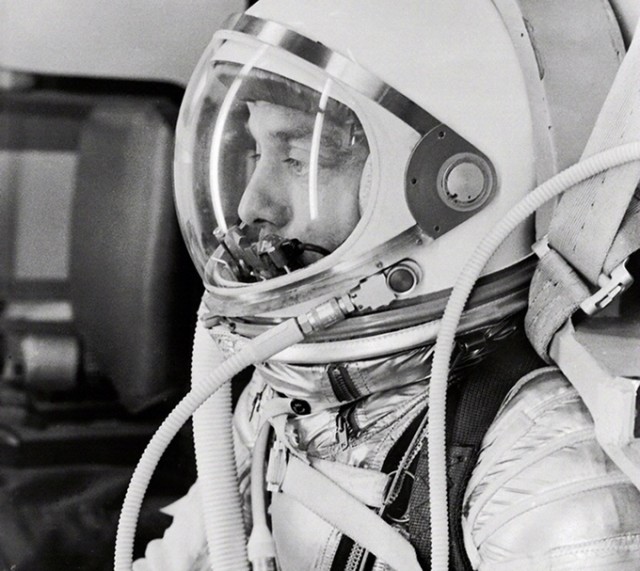
Astronaut Alan Shepard in his silver pressure suit as he prepares for his upcoming Mercury launch. (NASA)
In the end, “Reboot the Suit” raised $719,779.
“We were thrilled and blown away the speed in which we reached [our goal],” said Lee. “We are all still kind of in shock that we’ve raised over $700,000 for these two suits. It’s a huge triumph, I think, for both the public and the Smithsonian together to get this accomplished.”
People gave anywhere from $1 to $10,000, but the most common amount donated was $20. The Smithsonian doesn’t know the demographics of the donors, but most of the donations came from Americans.
Donor comments suggest they were thrilled to be able to participate in the project.
“I am proud to be in a position to help restore Neil’s suit by pledging for this project, it’s [truly] a part of my oldest living memory,” donor Thierry Labbe wrote on the “Reboot the Suit” Kickstarter page.
“This suit represents a monument in our history,” donor Brett Dworaczyk wrote. “Thanks to everyone who participated to ensure the proper preservation and recognition of such an important piece of our heritage.”
The preserved suit — complete with lunar particles still clinging to its surface — will go on public display at the Smithsonian National Air and Space Museum in 2019, in time for the 50th anniversary of the Apollo mission. In 2020, the spacesuit moves to its permanent new home, the “Destination Moon” gallery, which is scheduled to open in 2020.
Buoyed the success of “Reboot the Suit”, the Smithsonian is hard at work planning its next Kickstarter campaign. They’ll consider not only urgency and need, but also what project has the best chance of capturing the public’s imagination and duplicating the success of the Smithsonian’s first campaign.
Thanks to that kick-off success, Neil Armstrong’s suit — initially designed to work for two weeks and already preserved for almost 50 years — will be conserved for another half-century: one small step for man, helped along by 9,477 members of mankind.
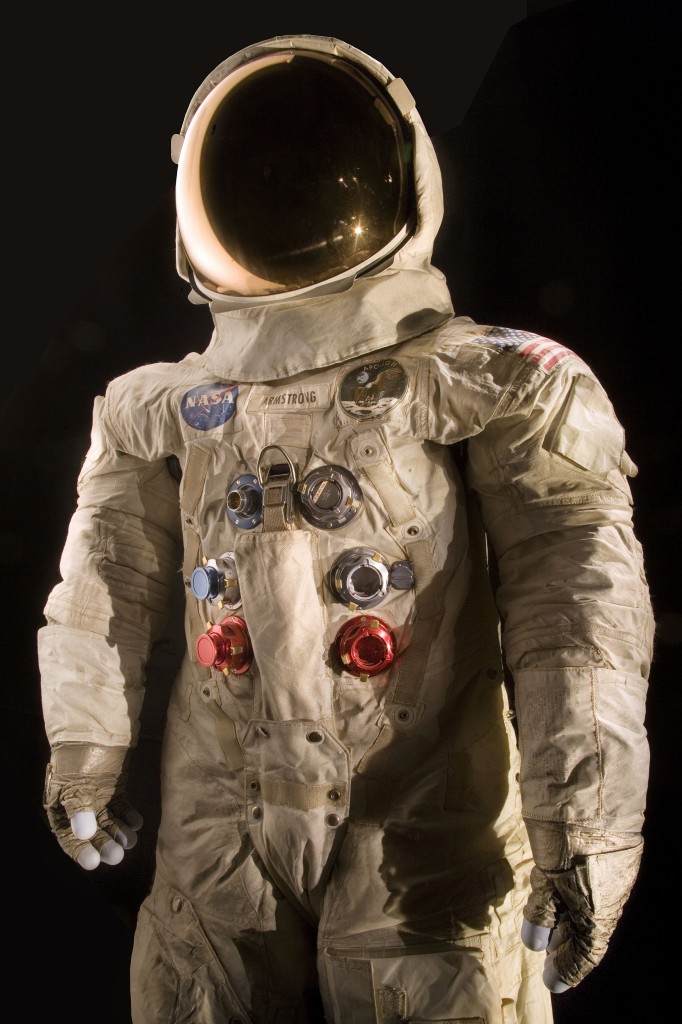
The spacesuit worn by astronaut Neil Armstrong, commander of the Apollo 11 mission, which landed the first man on the moon on July 20, 1969. (Smithsonian Institution)

Alan Shepard, one of the original “Mercury 7,” wore this suit on the first flight of an American astronaut in 1961.
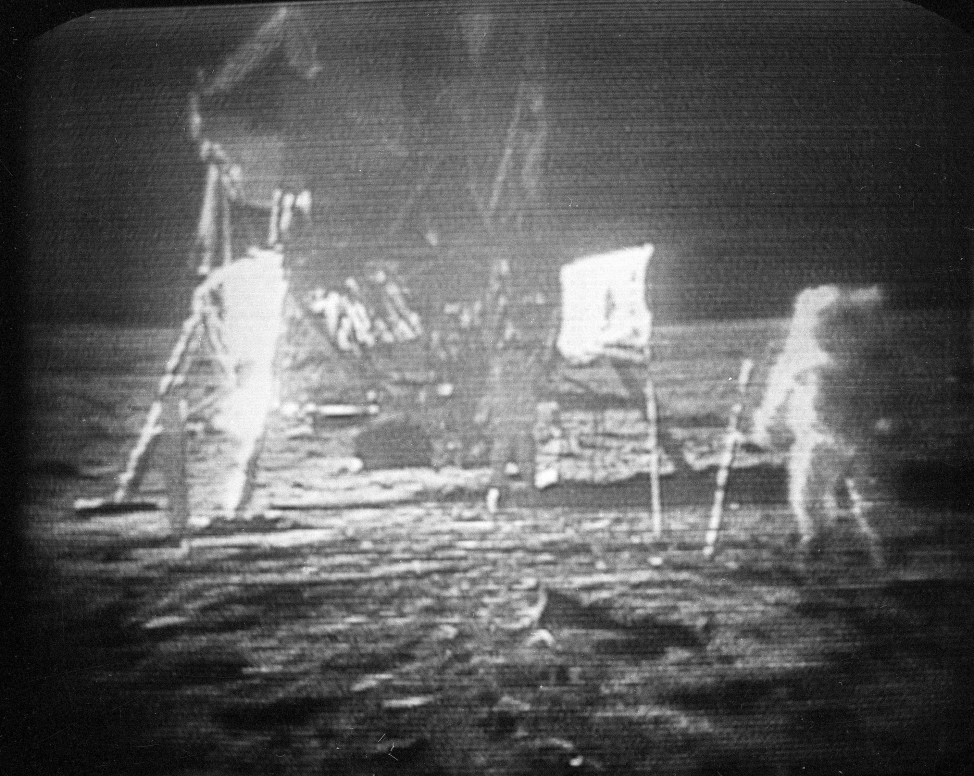
FILE – In this July 20, 1969 black-and-white file photo, taken from a television monitor, Apollo 11 astronaut Neil Armstrong, right, trudging across the surface of the moon. Edwin E. Aldrin is seen closer to the craft. (AP Photo)

The $500,000 raised will go towards a climate controlled display case for Neil Armstrong’s Apollo 11 spacesuit display in the “Destination Moon” gallery, set to open in 2020. (Artist’s rendering courtesy Smithsonian Institution)











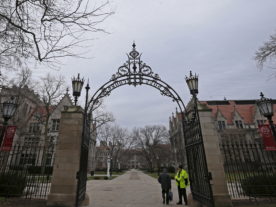

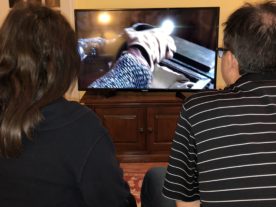










Certainly the technology back then would not allow a moon landing and/or a safe return. Area 51 was much more likely.